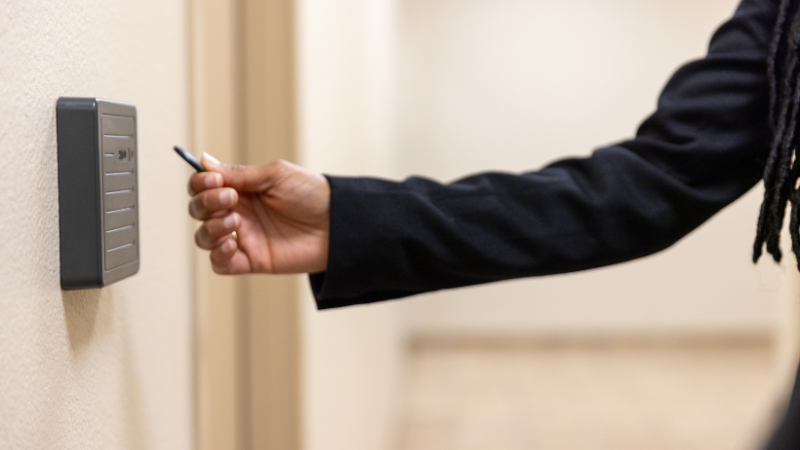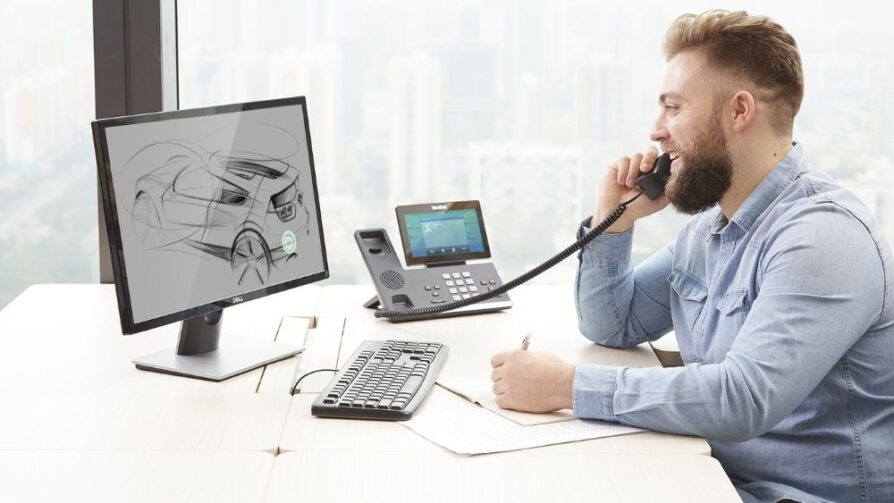Protecting Patient Data and Healthcare Staff with Access Control
Hospitals, clinics, and medical facilities face growing challenges when it comes to physical security—especially as healthcare data becomes a high-value target for cybercriminals and insider threats. Fortunately, modern access control systems offer a powerful solution for safeguarding healthcare environments.

Healthcare facilities are unique in that they must remain accessible to patients, visitors, and staff while also protecting sensitive areas such as patient rooms, operating suites, record storage, pharmacies, data centers, and admin offices. Traditional lock-and-key systems simply don’t offer the flexibility or oversight needed to keep these areas secure. Electronic door systems provide granular control over who enters each space and when.
Access control is no longer optional in healthcare—it’s essential. From protecting sensitive data and high-risk areas to ensuring regulatory compliance and staff safety, these systems are a critical component of any modern healthcare security strategy.
Benefits of Access Control in Healthcare
Modern healthcare facilities require more than just locked doors to ensure safety, privacy, and operational efficiency. Access control systems offer a smart, scalable way to protect both people and sensitive information.
Here’s how they benefit hospitals, clinics, and other medical environments:
Enhances Physical Security
Hospitals and clinics operate around the clock, often in high-stress and unpredictable environments. From emergency rooms to psychiatric units, ensuring the safety of staff and patients is a constant concern. Smart systems allow facilities to:
- Limit access to restricted zones like medication storage, operating rooms, and staff-only areas
- Automatically lock down specific sections during emergencies or security threats
- Set different access levels for nurses, physicians, administrative staff, janitorial teams, contractors, and visitors
This layered security approach helps prevent potential threats, enhances workplace safety, and ensures only the right people are in the right places at the right times.
Prevents Unauthorized Access
Unauthorized access can lead to safety risks, theft, or breaches of confidential information. Unlike traditional keys that can be copied or lost, electronic access credentials (e.g., keycards, biometrics, or mobile IDs) are unique, trackable, and easily deactivated if compromised.
This level of control helps prevent:
- Intrusions by unauthorized individuals
- Theft or tampering with sensitive equipment or supplies
- Exposure of patient data stored in physical or digital formats
By clearly defining who has access to what, facilities can dramatically reduce their risk profile.
Supports Regulatory Compliance (e.g., HIPAA, PCI-DSS)
Healthcare providers must comply with strict data protection regulations like HIPAA and PCI-DSS, which require both digital and physical safeguards for sensitive information.
Electronic door access supports these mandates by:
- Restricting entry to areas where Protected Health Information (PHI) is stored or processed
- Maintaining logs that show who accessed secure zones and when
- Allowing quick adjustments to access permissions as roles or responsibilities change
This makes it easier to pass audits, demonstrate compliance, and avoid costly fines or reputational damage.
Increases Accountability with Activity Tracking
Access control systems automatically generate audit trails—detailed records of who entered what area and at what time. These logs:
- Improve accountability among staff and contractors
- Help investigate security incidents or breaches
- Provide clear documentation for regulatory audits
Remote management features also allow administrators to monitor access activity in real time and respond quickly to issues, such as lost credentials or unauthorized access attempts.
Integrates with Surveillance, Alarms, and Visitor Management Systems
This system becomes even more powerful when integrated with other security technologies. Healthcare facilities can combine access control with:
- Video surveillance, to verify who entered and when
- Alarm systems, to trigger responses for forced entries or doors held open
- Visitor management platforms, to issue temporary credentials and track guest movement
These integrations create a unified, intelligent security ecosystem that enhances visibility, response times, and overall safety for everyone in the building.
A Safer, Smarter Future for Healthcare
As healthcare environments become more complex, physical security must evolve too. Investing in access control is not just about compliance—it’s about creating a safer space for healing, working, and caring.
Whether you’re managing a large hospital or a small clinic, implementing a robust electronic door control system will go a long way toward protecting patient data, safeguarding staff, and ensuring peace of mind for everyone who enters your doors.
Let’s talk. 843.236.6436.
Ready for IT that WORKS for your business?

Schedule a 15-minute meeting with our team.
- Managed IT Services
- Business Phone Systems
- Managed Print
- Cybersecurity
- Cloud Services
- Data Cabling
